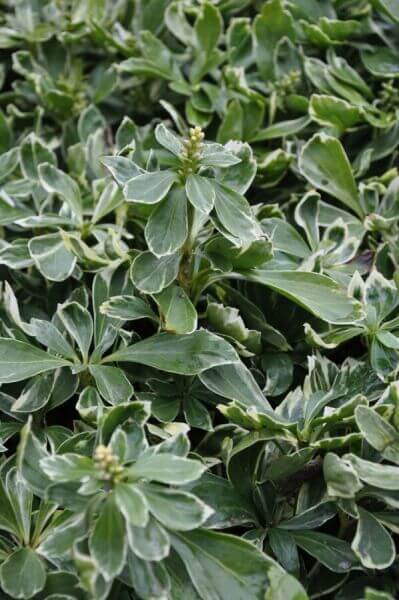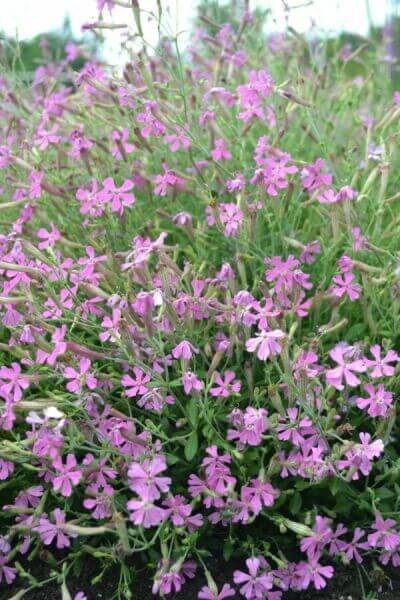Best Hedge Plants For Slopes
Best Hedge Plants For Slopes
Blog Article
Best Hedging Plants For Versatile Gardens
Enhance your garden's appeal with rich hedge varieties such as Yew (Taxus), Thuja, Laurel, Photinia, and Bamboo, commemorated for their structural integrity and environmental advantages.
Yew and Thuja offer evergreen coverage and winter season strength, while Laurel offers quick growth and broad, fragrant leaves.
Photinia includes seasonal charm with its lively red foliage, and Bamboo lends a low-maintenance, tranquil atmosphere.
These hedges improve air quality, minimize sound, and create tranquil, private areas.
Appropriate planting, spacing, and upkeep make sure vigorous growth and eco-friendly consistency.
Explore how these rich ranges can raise your garden's charm and wellness.
Secret Takeaways
Change Your Garden With Lush Hedge Varieties
- Select Yew for its dense, evergreen development and unparalleled longevity.
- Select Laurel for its quick development and broad leaves, ensuring quick privacy.
- Select Photinia for its lively seasonal foliage, which turns a striking dark red.
- Make use of Bamboo for a low-maintenance, winter-hardy hedge with visual appeal.
- Area plants 2-3 per meter and prune regularly for optimal growth and health.
Popular Hedge Plants
When transforming a garden with lush hedge varieties, it's necessary to consider popular hedge plants such as Yew, Thuja, Laurel, and Photinia due to their distinct qualities and benefits.
Yew (Taxus) is highly esteemed for its longevity and dense, green growth, making it a prime choice for enduring landscapes.
Thuja is noted for its evergreen foliage and robust winter resilience.
Photinia adds seasonal vibrancy with red leaves that darken over time, creating vibrant visual appeal.
Laurel uses quick development and fragrant, broad leaves, perfect for quick privacy.
Additionally, Bamboo is an excellent choice for atmosphere, using a low-maintenance, winter-hardy choice that improves the garden's aesthetic with its sophisticated, swaying canes.
These selections deal with a range of horticultural requirements and preferences.
Advantages of Garden Hedges
Garden hedges use a multitude of advantages, making them an important addition to any landscape. These natural barriers are affordable to implement and supply substantial wind security, enhancing air blood circulation and adding to noise decrease. The dense foliage of hedges like Thuja and Beech ensures personal privacy by obstructing presence, producing a secluded and tranquil environment.
Hedges also play a crucial function in microclimate guideline, supplying a steady environment that fosters plant development and reduces temperature level changes. Their detailed leaf structures filter pollutants, enhancing air quality and contributing to a much healthier garden environment.
Furthermore, hedges excel in noise decrease, taking in and deflecting acoustic waves to lower ambient noise levels. This dual performance of providing both visual and acoustic privacy boosts the overall serenity and aesthetic appeal of any garden.
Planting and Upkeep Tips
For an effective hedge, precise preparation of the planting area is essential. Make sure the soil has proper pH and drainage to support strong root development.
Space the plants properly for the selected types. Water the hedge frequently during its initial development stage, adjusting as required with seasonal changes.
Execute a organized insect control and illness prevention technique, utilizing chemical or natural treatments when required. Regularly inspect for aphids, termites, and fungal infections.
Apply mulch to maintain moisture and reduce weeds. Seasonal pruning promotes dense development and air blood circulation, vital for plant health.
Following these guidelines will assist you cultivate a lively, well-maintained hedge that improves the beauty of your garden.
Spacing and Cutting Guidelines
Spacing and Cutting Guidelines
Appropriate spacing and trimming are important for cultivating healthy, visually appealing hedges. Adequate spacing guarantees each plant receives adequate nutrients, light, and airflow.
Follow these standards for optimal hedge upkeep:
- Spacing: Position hedge plants 2-3 plants per meter to motivate robust growth.
- Pruning Strategies: Regular pruning is necessary for preserving wanted hedge height and shape. Trim brand-new development in summertime and cut down older wood during winter season.
- Seasonal Care: Change cutting schedules and methods according to seasonal requirements to guarantee plant health.
- Hedge Height: Regularly screen and trim to keep the desired hedge height and accomplish consistent visual appeals.
Sticking to these actions will ensure your hedge flourishes, boosting both the appeal and performance of your garden.
Choosing the Right Hedge
Selecting the Right Hedge
Choosing the proper hedge involves evaluating elements such as fully grown height, foliage density, and ecological strength. Successful hedge plant choice needs comprehending each types' growth characteristics and site-specific versatility.
For example, Yew (Taxus) provides outstanding durability and thick development, while Thuja is significant for its winter season strength. In addition, thinking about upkeep requirements is crucial; fast-growing species like Laurel or Privet need routine cutting, whereas low-maintenance alternatives like Bamboo or Ivy may be preferable for those seeking minimal upkeep.
Environmental factors such as soil type, light availability, and wetness conditions need to likewise assist the choice process. This cautious method guarantees the chosen hedges will flourish, providing both practical and visual benefits to the garden landscape.
Delivery and Planting Recommendations
To ensure your hedge plants grow, they should be delivered by specialized carriers and planted quickly upon arrival.
Follow these important steps for effective planting:
- Soil Preparation: Improve the soil with raw material to improve drainage and nutrient material.
- Planting Depth: Create a trench two times the width and equivalent to the depth of the root ball.
- Watering Techniques: Water thoroughly after planting, keeping the soil consistently moist but not filled.
- Mulching: Use a layer of mulch to retain moisture and suppress weeds.
Client Assistance and Service
Offered the essential function of timely support in horticultural pursuits, our consumer support team is offered 6 days a week through telephone, e-mail, and social media to offer professional suggestions and promptly resolve any concerns. Their commitment to quick reaction times guarantees client complete satisfaction by fixing questions connected to plant health, optimum planting approaches, and upkeep schedules.

Reaction Time
-------------------
This detailed support group, enhanced by a stellar 9.3/ 10 client score, highlights our dedication to boosting the gardening experience for every single client.
Frequently Asked Questions
For How Long Does It Consider Hedge Plants to Establish?
Hedge plants generally need one to three years to become totally developed, with the precise duration varying by types and growing conditions.
Reliable care during this crucial period is necessary for robust development. Constant watering, watchful weed control, and appropriate fertilizer application are essential in promoting strong root advancement.
For example, here fast-growing types like Laurel might establish faster, while slower-growing ranges such as Yew may take longer. Thorough upkeep speeds up the establishment process, leading to thick and healthy hedges.
What Are the Best Hedge Plants for Personal Privacy?
The concern of the finest hedge plants for privacy involves examining evergreen and deciduous alternatives.
Evergreen hedges like Thuja, Laurel, and Cypress offer year-round coverage, ensuring constant personal privacy.
In contrast, deciduous hedges such as Beech offer seasonal personal privacy, shedding leaves in chillier months.
Key upkeep ideas for privacy hedges include routine cutting, fertilizing in spring, and proper spacing-- normally 2 to 3 plants per meter.
Furthermore, consistent watering and thorough weed elimination are essential for promoting healthy, thick growth.
Can Hedge Plants Attract Wildlife to My Garden?
Yes, hedge plants can draw in wildlife to your garden by providing necessary benefits like shelter, food, and nesting websites, consequently enhancing regional biodiversity. Yew, holly, and laurel are exceptional for attracting birds, while ivy supports a range of insects.
Nevertheless, it is necessary to keep in mind that there are some downsides, such as increased maintenance to handle pests and routine maintenance. Carefully picking and maintaining hedge varieties can assist balance these drawbacks and benefits, eventually fostering a dynamic and sustainable environment in your garden.
Exist Any Flowering Hedge Plants Available?
Yes, there are flowering hedge plants readily available that can enhance the charm of your garden.
For instance, Elaeagnus, also known as Olive Willow, produces aromatic white flowers in the fall, including a touch of elegance.
Photinia, another popular choice, showcases dynamic red leaves that grow into an abundant green, creating a dynamic visual impact throughout the seasons.
To make sure these plants thrive, it's vital to practice correct pruning techniques and seasonal maintenance, such as cutting brand-new development in the summertime and cutting down in the winter season.
These procedures will assist maintain the health and aesthetic appeal of your flowering hedges.
How Do I Prevent Insects in My Hedge Plants?
To prevent insects in hedge plants, utilize natural insect control techniques and preserve correct hedge care. Present beneficial insects like ladybugs, which prey on harmful pests, to develop a balanced community.
Regularly check your hedges for indications of infestation and immediately get rid of any afflicted parts to avoid the spread. Make sure the health of your hedges by using well balanced fertilizers and offering sufficient water.
Utilize mulching to retain soil moisture and correct spacing to lower plant tension and promote robust growth. These practices jointly help in lessening pest issues and keeping a healthy hedge.
Conclusion
In essence, picking the best hedge varieties such as Yew, Thuja, and Laurel can transform any garden into a serene sanctuary. These plants offer year-round greenery, boost visual appeal, and offer useful advantages like noise decrease and wind security.
Proper planting strategies, precise spacing, consistent watering, and seasonal cutting are important for optimal development.
Reliable shipment services and professional consumer assistance ensure a smooth experience from purchase to planting, making it simpler than ever to raise your outside space.
Garden hedges use a wide range of advantages, making them a valuable addition to any landscape. These natural barriers are cost-effective to carry out and offer substantial wind security, boosting air blood circulation and contributing to sound reduction. The thick foliage of hedges like Thuja and Beech ensures personal privacy by obstructing exposure, developing a secluded and tranquil environment.

Pruning Techniques: Routine pruning is vital for preserving desired hedge height and shape. Cut brand-new growth in summer and cut back older wood throughout winter.
Report this page